We are delighted to announce these Illustrious Short Course Speakers have been confirmed for IEEE IUS 2019:
Medical Ultrasonics
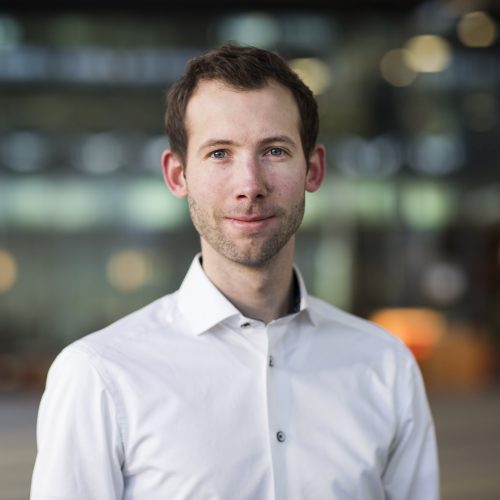
Dr Ruud van Sloun
Ruud J. G. van Sloun was born in Roermond, The Netherlands, in 1990. He received the B.Sc., and M.Sc. degree (with distinction cum laude) in Electrical Engineering from the Eindhoven University of Technology, The Netherlands, in 2012 and 2014, respectively. In 2018, he received the Ph.D. degree (with distinction cum laude) from the Eindhoven University of Technology. Since then, he has been an assistant professor at the department of Electrical engineering, Eindhoven University of Technology, The Netherlands. His current research interests include artificial intelligence and deep learning for front-end signal processing, quantitative ultrasound imaging, compressed sensing, and signal & image analysis.
View Abstract: Artificial Intelligence in Ultrasound Imaging
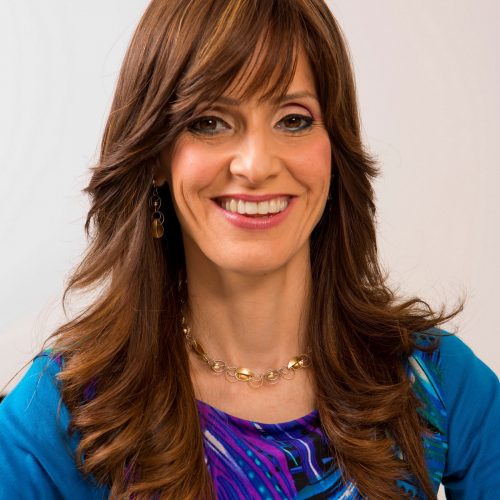
Prof Dr Yonina Eldar
Yonina Eldar is a Professor in the Department of Mathematics and Computer Science, Weizmann Institute of Science, Rechovot, Israel where she heads the center for Biomedical Engineering and Signal Processing. She was previously a Professor in the Department of Electrical Engineering at the Technion. She is also a Visiting Professor at MIT, a Visiting Scientist at the Broad Institute, and an Adjunct Professor at Duke University and was a Visiting Professor at Stanford.
She received the B.Sc. degree in physics and the B.Sc. degree in electrical engineering both from Tel-Aviv University (TAU), Tel-Aviv, Israel, in 1995 and 1996, respectively, and the Ph.D. degree in electrical engineering and computer science from the Massachusetts Institute of Technology (MIT), Cambridge, in 2002. She is a member of the Israel Academy of Sciences and Humanities, an IEEE Fellow and a EURASIP Fellow. She has received many awards for excellence in research and teaching, including the IEEE Signal Processing Society Technical Achievement Award (2013), the IEEE/AESS Fred Nathanson Memorial Radar Award (2014) and the IEEE Kiyo Tomiyasu Award (2016). She was a Horev Fellow of the Leaders in Science and Technology program at the Technion and an Alon Fellow. She received the Michael Bruno Memorial Award from the Rothschild Foundation, the Weizmann Prize for Exact Sciences, the Wolf Foundation Krill Prize for Excellence in Scientific Research, the Henry Taub Prize for Excellence in Research (twice), the Hershel Rich Innovation Award (three times), the Award for Women with Distinguished Contributions, the Muriel & David Jacknow Award for Excellence in Teaching, and the Technion’s Award for Excellence in Teaching (two times). She received several best paper awards and best demo awards together with her research students and colleagues, was selected as one of the 50 most influential women in Israel, and was a member of the Israel Committee for Higher Education. She is the Editor in Chief of Foundations and Trends in Signal Processing and a member of several IEEE Technical Committees and Award Committees.
View Abstract: Artificial Intelligence in Ultrasound Imaging
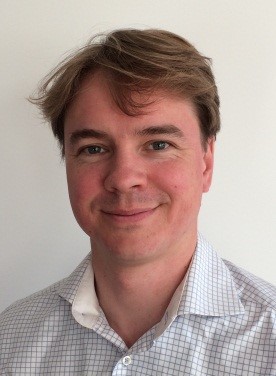
Prof Hendrik Vos
Hendrik J. Vos is Assistant Professor at Erasmus MC, Rotterdam, the Netherlands, in high frame rate echography. He received the M.Sc. degree with honors in Applied Physics from Delft University of Technology, The Netherlands in 2004. He received the Ph.D. in Biomedical Engineering from Erasmus MC in 2010, in optical and acoustic characterization of ultrasound contrast microbubbles. He has also worked as a Postmaster Researcher with the University of Florence, Italy, and as an industrial contract researcher on ultrasonic monitoring solutions and microbubble detection systems. His current research is in biomedical imaging and related subclinical and clinical studies in its various aspects: 2-D and 3-D transducers and beamforming, contrast microbubble imaging, ultrafast Doppler, and cardiac shear waves. He has published over 40 journal articles and book chapters on biomedical imaging. He also is co-director of the annual European Symposium on Ultrasound Contrast Imaging, Rotterdam, and faculty member of the International Bubble Conference, Chicago, which are both affiliated to the International Contrast Ultrasound Society (ICUS).
View Abstract: Microbubbles and Nanodroplets for Biomedical Ultrasound Applications: Design Principles and Methods
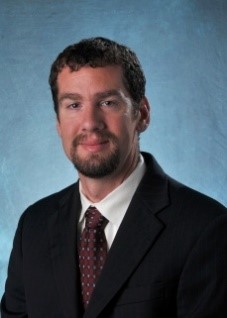
Prof Mark Borden
Mark Borden is a Professor of Mechanical Engineering, Fellow of Materials Science & Engineering and Director of Biomedical Engineering at the University of Colorado, USA. He received the B.S. in Chemical Engineering from the University of Arizona in 1999 and the Ph.D. in Chemical Engineering from the University of California Davis in 2003. He then worked as a postdoctoral researcher in Biomedical Engineering at UC Davis and visiting scientist in Radiology at the Arizona Cancer Center. He was an Assistant Professor of Chemical Engineering at Columbia University from 2007-2010 before taking his current position at the University of Colorado, Boulder. He has published over 90 journal articles and book chapters, as well as 7 issued patents, on microbubbles, nanodroplets and their biomedical applications. He currently serves as member of the technical program committee for IEEE IUS, scientific board for the European Symposium on Ultrasound Contrast Imaging, and member of the NIH Biomaterials and Biointerfaces (BMBI) study section. His honors include an NSF CAREER Award and the James D. Watson Investigator Award.
View Abstract: Microbubbles and Nanodroplets for Biomedical Ultrasound Applications: Design Principles and Methods
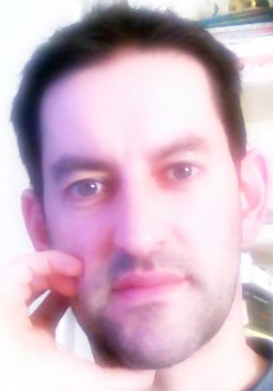
Damien Garcia
Damien Garcia received his engineer’s degree in Solid and Fluid Mechanics in Marseilles, France. He received the M.Sc. and Ph.D. degrees in Biomedical Engineering from the University of Montreal, Canada, in 2003. He was a postdoc fellow at the department of echocardiography of the Hospital General Universitario Gregorio Marañón, Madrid, Spain, in 2007-2008. He then became Assistant and Associate Professor at the department of Radiology of the University of Montreal until mid-2016. He is currently an INSERM Researcher at Creatis, Lyon, France, since 2017. He is an Associate Editor for IEEE TUFFC. He also serves on the Technical Program Committee of the IEEE Ultrasonics Symposium. His research interests include Doppler echocardiography, cardiovascular hemodynamics & vector flow imaging, evaluation of cardiac function, numerical methods, and signal & image processing.
View Abstract: Motion Estimation Algorithms in Ultrasound Imaging: Principles and Hands-On Development
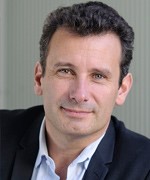
Prof Mickael Tanter
Mickael Tanter is a research professor of the French National Institute for Health and Medical Research (Inserm), distinguished professor of ESPCI Paris and AXA Chair Professor. He is heading the laboratory Inserm “Physics for Medicine Paris” (Inserm, CNRS, ESPCI Paris), Paris, France. He is also the director of the first Inserm Technology Research Accelerator created in 2016 and dedicated to Biomedical Ultrasound. Mickael Tanter is a world-renowned expert in biomedical ultrasound and wave physics. He authored more than 300 peer-reviewed papers and book chapters and is the recipient of 50 international patents. In the last 20 years, he co-invented several major innovations in Biomedical Ultrasound: Transient Elastography, Ultrafast Ultrasound and Shear Wave Elastography, functional Ultrasound (fUS) imaging of brain activity and Superresolution Ultrasound based on Ultrasound Localization Microscopy. He received many national and international distinctions (among them the Honored Lecture of the Radiology Society of North America in 2012, the Grand Prize of Medicine and Medical Research of Paris city in 2011, the Grand Prize of Fondation de la Recherche Médicale in 2016 and the Carl Hellmuth Hertz Prize of IEEE Ultrasonics, Ferroelectrics and Frequency Control society in 2017, and the highest distinction of the European Society in Molecular Imaging ESMI in 2018). M. Tanter is also the co-founder of several MedTech companies in Biomedical Ultrasound (Supersonic Imagine, CardiaWave, Iconeus).
View Abstract: Ultrafast Ultrasound Imaging: Basic Principles and Applications
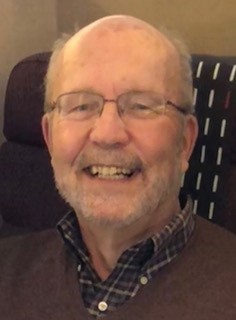
Dr Kai Thomenius
Kai E. Thomenius took on the role of a Research Scientist at the Institute of Medical Engineering and Science at MIT in Cambridge, MA after his retirement from a position of a Chief Technologist in the Diagnostics and Biomedical Technologies group at General Electric Global Research facility in Niskayuna, NY, USA. Previously, he has held senior R&D roles at ATL Ultrasound Inc., Interspec Inc., Elscint Inc., as well as other ultrasound companies. In addition, he has been an Adjunct Professor in the Electrical, Computer, and Systems Engineering Department at Rensselaer Polytechnic Institute. Dr. Thomenius’ academic background is in electrical engineering with a minor in physiology; all of his degrees are from Rutgers University. His long-term interests have been in ultrasound beam formation and miniaturization of ultrasound scanners, propagation of acoustic waves in inhomogeneous media, delivery of drugs and plasmid DNA to cells, and determination of physiological information from the echoes that arise from such beams. Dr. Thomenius is a Fellow of the American Institute of Ultrasound in Medicine and is the 2017 recipient of the Joseph H. Holmes Pioneer Award from the American Institute of Ultrasound in Medicine.
View Abstract: Ultrasound System Design and Software Beamformation
Sensors, NDE & Industrial Applications
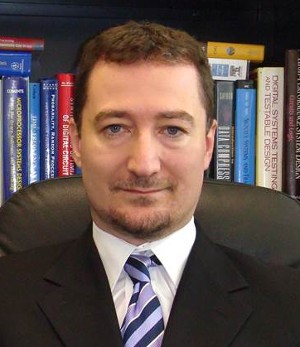
Dr Erdal Oruklu
Erdal Oruklu (IEEE Senior Member) received his B.S. degree in Electronics and Communications Engineering from Technical University of Istanbul, Turkey in 1995, his M.S. degree in Electrical Engineering from Bogazici University, Istanbul, Turkey in 1999 and his Ph. D. degree in Computer Engineering from Illinois Institute of Technology, Chicago, Illinois in 2005. He joined the Department of Electrical and Computer Engineering, Illinois Institute of Technology in 2005, where he is an Associate Professor and the Director of VLSI and SoC Design Research Laboratory. Dr. Oruklu’s research interests are reconfigurable computing, advanced computer architectures, hardware/software co-design, embedded systems, and high-speed computer arithmetic. In particular, he focuses on the research and development of system-on-chip (SoC) frameworks for FPGA and VLSI implementations of real-time ultrasonic detection, estimation, and imaging applications. Dr. Oruklu has more than 130 technical publications. He is a senior member of IEEE.
View Abstract: System-on-Chip and Embedded Computing for Ultrasonic Imaging, Deep Learning, Data Compression, and Software-Defined Communications
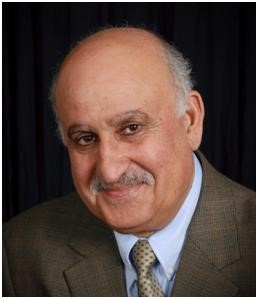
Dr Jafar Saniie
Jafar Saniie (IEEE Life Fellow for contributions to ultrasonic signal processing for detection, estimation, and imaging) received his B.S. degree in Electrical Engineering from the University of Maryland in 1974. He received his M.S. degree in Biomedical Engineering in 1977 from Case Western Reserve University, Cleveland, Ohio, and his Ph.D. degree in Electrical Engineering in 1981 from Purdue University, West Lafayette, Indiana. In 1981 Dr. Saniie joined the Department of Applied Physics, University of Helsinki, Finland, to conduct research in photothermal and photoacoustic imaging. Since 1983 he has been with the Department of Electrical and Computer Engineering at Illinois Institute of Technology where he is the Department Chair, the Filmer Endowed Chair Professor, and Director of the Embedded Computing and Signal Processing (ECASP) Research Laboratory ( http://ecasp.ece.iit.edu/ ). Dr. Saniie’s research interests and activities are in ultrasonic signal and image processing, statistical pattern recognition, estimation and detection, data compression, time-frequency analysis, embedded digital systems, digital signal processing with field programmable gate arrays, computer vision, and deep learning, and ultrasonic nondestructive testing and imaging. Dr. Saniie has been a Technical Program Committee member of the IEEE Ultrasonics Symposium since 1987 (The Chair of Sensors, NDE and Industrial Applications Group, 2004-2013), the Lead Guest Editor for the IEEE UFFC Special Issue on Ultrasonics and Ferroelectrics (August 2014) and the IEEE UFFC Special Issue on Novel Embedded Systems for Ultrasonic Imaging and Signal Processing (July 2012), Associate Editor of the IEEE Transactions on Ultrasonics, Ferroelectrics, and Frequency Control since 1994. Dr. Saniie was the General Chair for the 2014 IEEE Ultrasonics Symposium in Chicago. He served as the Ultrasonics Vice President of the IEEE UFFC Society (2014-2017). He has over 340 publications and has supervised 35 Ph.D. dissertations.
View Abstract: System-on-Chip and Embedded Computing for Ultrasonic Imaging, Deep Learning, Data Compression, and Software-Defined Communications
Physical Acoustics
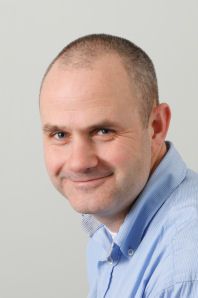
Dr Koen van Dongen
Koen W.A. van Dongen received his MSc degree from Utrecht University in 1997. From 1998 to 2002, he worked for T&A Survey on the development of a directional borehole radar system. In 2002 and 2003 he worked as postdoctoral researcher on ground penetrating radar in the Laboratory of Electromagnetic Research at Delft University of Technology. From 2003 to 2005, he worked as a Marie-Curie Fellow on ultrasound thermometry in the Ultrasonic Research Group at University College Cork. In 2006, he moved to the Laboratory of Acoustical Wavefield Imaging, Delft University of Technology. His major research interests include imaging, inversion, and modelling of (nonlinear) acoustic wave fields for medical applications.
View Abstract: Acoustical Imaging; from acoustic field equations to imaging and inversion

Prof Yook-kong Yong
Yook-Kong Yong is professor at Rutgers University, Dept. of Civil and Environmental Engineering, New Jersey, U.S.A. He received the B.S. degree in civil engineering (1979) from Lafayette College, Easton, Pennsylvannia, U.S.A., the M.A. (1981) and Ph.D. (1984) degrees in structures/mechanics from Princeton University, Princeton, New Jersey, U.S.A.
He is a registered Professional Engineer in New Jersey. He serves as an associate editor for the journal IEEE Transactions on Ultrasonics, Ferroelectrics, and Frequency Control. At the IEEE Society, he serves as the chair of Technical Program Committee for the IEEE Ultrasonics Symposium 2011, and as a member of the Technical Program Committee for the IEEE Ultrasonics Symposia, and IEEE Frequency Control Symposia in the years 1989 to present. He is the recipient of the Carrol Phillips Bassett Civil Engineering Prize from Lafayette College. His research interests are in the numerical modeling of bulk acoustic wave and surface acoustic wave piezoelectric resonators and filters; their frequency-temperature behavior, acceleration sensitivity, noise characteristics and thermal stress behavior. He has also practiced as a consultant to the industry.
View Abstract: Finite Element Modelling of Acoustic Resonators
Microacoustics-SAW, BAW & MEMS

Prof Shuji Tanaka
Prof. Shuji Tanaka received B.E., M.E. and Dr.E. degrees in mechanical engineering from The University of Tokyo in 1994, 1996 and 1999, respectively. He was a Research Associate at Department of Mechatronics and Precision Engineering, Tohoku University from 1999 to 2001, an Assistant Professor from 2001 to 2003, and an Associate Professor at Department of Nanomechanics from 2003 to 2013. He is currently a Professor at Department of Robotics and Microsystem Integration Center. He was also a Fellow of Center for Research and Development Strategy, Japan Science and Technology Agency from 2004 to 2006, and a Selected Fellow from 2006 to 2018. In FY2017, he served as the President of Micro-Nano Science & Engineering Division, Japan Society of Mechanical Engineers (JSME). At present, he is serving as the Vice-Chair (Group 4 Chair) of Technical Program Committee of IEEE International Ultrasonics Symposium. His research interests include MEMS sensors, acoustic wave devices, piezoelectric devices and materials, and wafer-level packaging and integration. He is an IEEE Fellow and a JSME Fellow.
View Abstract: MEMS Technology for Acoustic Wave Devices

Prof Songbin Gong
Prof. Songbin Gong received his Ph.D. degree in Electrical Engineering from the University of Virginia, Charlottesville, VA, USA, in 2010. He is currently an Assistant Professor and an Intel Alumni Fellow with the Department of Electrical and Computer Engineering and the Micro and Nanotechnology Laboratory, University of Illinois at Urbana–Champaign, Urbana, IL, USA. His research primarily focuses on the design and implementation of RF-MEMS devices, components, and subsystems for reconfigurable RF front ends. Also, his research explores hybrid microsystems based on the integration of MEMS devices with circuits or photonics for signal processing. He is a recipient of the 2014 Defense Advanced Research Projects Agency Young Faculty Award, the 2017 NASA Early Career Faculty Award, and 2019 Dean’s Award for Excellence in Research. Along with his students and postdocs, he received the Best Paper Awards from the 2017 IEEE International Frequency Control Symposium and the 2018 IEEE International Ultrasonic Symposium and the 2nd place in the Best Paper Competition at 2018 International Microwave Symposium. He has been a guest editor for the special issue on RF-MEMS in the Journal of Micromechanics and Microengineering, and also a Technical Committee Member of MTT-21 RF-MEMS of the IEEE Microwave Theory and Techniques Society, International Frequency Control Symposium, and International Electron Devices Meeting.
View Abstract: MEMS Technology for Acoustic Wave Devices
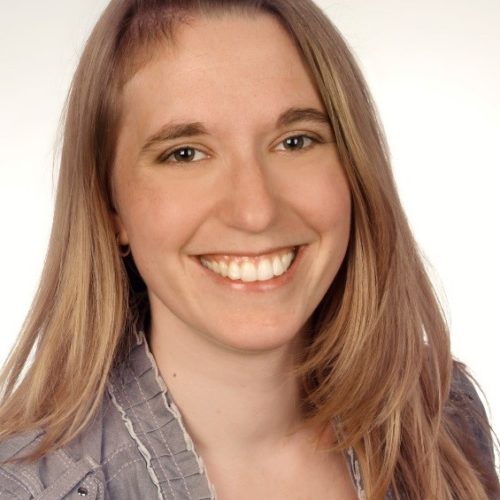
Dr Amelie Hagelauer
Dr. Amelie Hagelauer received the Dipl.-Ing. degree in mechatronics and the Dr.-Ing. degree in electrical engineering from the Friedrich-Alexander-University Erlangen-Nuremberg, Germany in 2007 and 2013, respectively. She joined the Institute for Electronics Engineering in November 2007, where she was working on thin film BAW filters towards her PhD. Since 2013 she is focusing on SAW/BAW and RF MEMS components, as well as integrated circuits for frontends up to 180 GHz. Dr. Hagelauer has been the Chair of MTT-2 Microwave Acoustics since 2015. Since 2016 she is leading a Research Group on Electronic Circuits. She is continuously contributing to the development of RF Acoustics community by organizing workshops and student design competitions. She has been acting as a Guest Editor for a special issue of the IEEE MTT Transactions on the topic “RF Frontends for Mobile Radio” as well as for a special issue in the MDPI Journal Sensors on the topic “Surface Acoustic Wave and Bulk Acoustic Wave Sensors”.
View Abstract: Multi-physics Modeling of BAW and SAW components
Transducers & Transducer Materials
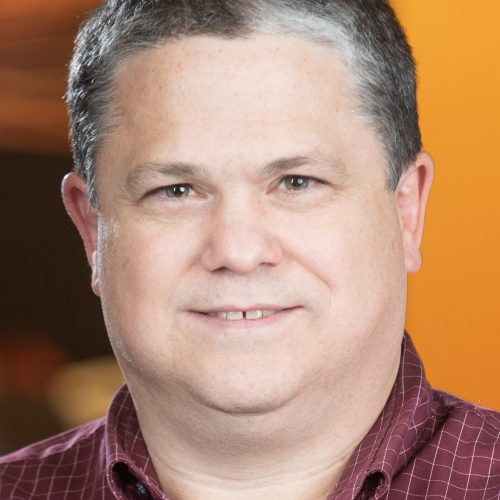
Dr David Mills
David M. Mills is a senior engineer with GE Global Research. He earned a B.S. degree in engineering from LeTourneau University, Longview, TX and a Ph.D. degree in biomedical engineering from Duke University, Durham, NC. In 2000, he joined GE as an ultrasound probes engineer, designing medical ultrasound transducers using PZFlex simulations for both piezoelectric and cMUT based transducers. Another research interest is in new clinical applications for ultrasound that are enabled by real-time 3D ultrasound imaging, visualization algorithms, and customized user interfaces. Dr. Mills has 25 issued patents and has authored more than 10 external publications. He is a member of the IEEE.
View Abstract: Medical Ultrasound Transducers
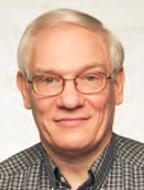
Dr Scott Smith
Scott Smith is a physicist with GE Global Research. He earned B.S. and Ph.D. degrees in physics from the University of Rochester and the University of Pennsylvania respectively. Joining GE in 1976, he developed phased array probes for medical ultrasound. More recently, he led projects on adaptive acoustics and novel probe materials and fabrication methods. Dr. Smith has over 50 issued patents and over 40 refereed publications. He is a member of the American Physical Society and an IEEE Fellow where he serves as an Associate Editor for the Transactions on UFFC and will be General Co-Chair of the 2020 International Ultrasonics Symposium.
View Abstract: Medical Ultrasound Transducers

Prof Sandy Cochran
Sandy Cochran is Professor of Ultrasound Materials and Systems in MIU, School of Engineering, University of Glasgow. Previously, he held a similar position in the School of Medicine, University of Dundee. He is Vice-President for Ultrasonics in the Ultrasound, Ferroelectrics and Frequency Control Society, previously Chairing the Materials and Transducers Group in the Technical Programme Committee, and General Co-Chair of the IEEE International Ultrasonics Symposium 2019. His Sonopill Programme was recently placed first in the NI Engineering Impact Awards category for Innovative Research. He is a Fellow of the UK Institute of Physics and a Member of IEEE and UK IET. He has been awarded 10 patents and has coauthored papers covering a wide range of topics relating to piezoelectric ultrasonic transducers and their applications. He is now focusing on the adoption of state of the art piezoelectric materials in challenging structures for wideband and high frequency ultrasound, principally for medical ultrasonics.
View Abstract: Piezoelectric Fundamentals: Materials and Transducers

Prof Shujun Zhang
Shujun Zhang is Professor at ISEM/AIIM of University of Wollongong, prior to which, he was senior Scientist at Materials Research Institute and Professor at Materials Science and Engineering Department of the Pennsylvania State University. He is associate editor-in-chief for IEEE Transaction on Ultrasounds, Ferroelectric and Frequency Control; associate editor for Science Bulletin; Journal of the American Ceramic Society and Journal of Electronic Materials, section Editor-in-Chief for Crystals. He was recipient of Ferroelectrics Young Investigator Award of IEEE UFFC Society in 2011. He is senior member of IEEE and elected AdCom member of IEEE UFFC. He holds 8 patents and has coauthored 400 papers, with SCI citation >12,000 and H index of 52. He is now focusing on fabrication-microstructure-property-performance relationship of functional materials.
View Abstract: Piezoelectric Fundamentals: Materials and Transducers
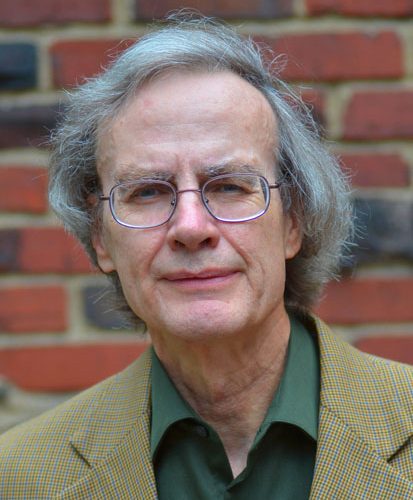
Prof David Greve
David W. Greve became Emeritus Professor of Electrical and Computer Engineering at Carnegie Mellon University in 2016. He was Professor of Electrical and Computer Engineering from 1990 to 2016 and also held courtesy appointments in the Department of Materials Science and Engineering and the Department of Physics. He has been Resident Institute Fellow in the Institute for Advanced Energy Systems, National Energy Technology Laboratory. He now offers consulting services through DWGreve Consulting, located in Sedona, Arizona. He has been a user of COMSOL and FEMLAB since 2000, incorporating simulation results in numerous publications and conference presentations.
His research has been in the areas of silicon integrated circuit technology, especially the deposition and characterization of thin films and epitaxial layers; semiconductor device physics; and sensors, including optical sensors and ultrasonic transducers. He is the author of books and review articles on semiconductor devices and semiconductor technology and has been Group 2 co-chair for the International Ultrasonics Symposium.
As a COMSOL Certified Consultant, Professor Greve offers consulting services in the areas of: ultrasonic transducers and ultrasonic wave propagation; near-field inductive coupling; RF antennas and microwave transitions; electrostatically or piezoelectrically activated MEMS devices; and AC/DC modeling, including coupling to heat transfer.
View Abstract: Multiphysics simulation of piezoelectric sensors and actuators
Practical Short Course: Verasonics
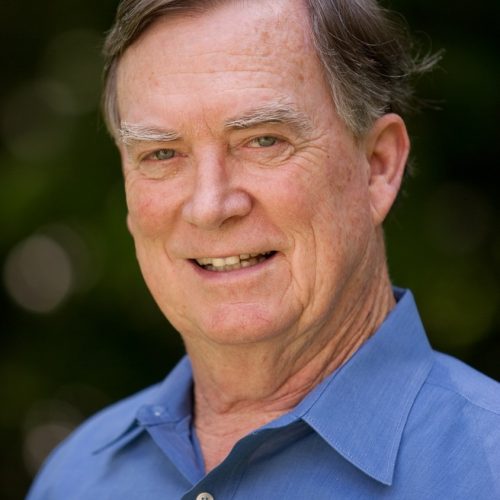
Dr Ron Daigle
Ron Daigle’s ultrasound career spans more than 40 years, beginning with research in using ultrasound for blood flow measurements as a graduate student. He has pioneered a number of innovations in ultrasound systems and is the author of over 40 publications and 20 patents in the field of diagnostic ultrasound. He currently serves as Chief Technology Officer for Verasonics, a company focused on providing tools for ultrasound research and technology for companies developing emerging applications. At Verasonics, he has developed a method of software beamforming that can be used with commercial computer modules that offers new image formation methods and support for high frame rate blood velocity measurements.
View Abstract: Volume Imaging with the Verasonics Research Systems
Practical Short Course: Onscale
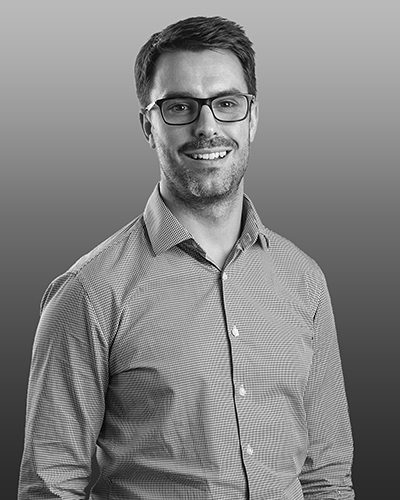
Dr Andrew Tweedie
Innovative ultrasonic engineer and company Director, with extensive experience in biomedical, NDE and sonar applications.
Andrew received an Engineering Doctorate from the University Strathclyde, Glasgow, U.K. in 2011 for “Spiral 2D Array Designs for Volumetric Imaging.” His EngD was carried out through the UK Research Centre for Non Destructive Evaluation, and his doctoral thesis demonstrated techniques for carrying out volumetric NDE inspections using 2D arrays with a 75% reduction in channel count.
From 2005 to 2012 he worked at Scottish start up Alba Ultrasound, where he designed 1-3 piezocomposite arrays for both the sonar and NDE markets. In his role as Alba’s R&D Manager he introduced a range of modelling tools, including PZFlex, to reduce the number of physical prototypes required for new products.
In 2012 he joined PZFlex, and is currently responsible for the European office in Glasgow, Scotland. His areas of interest include piezocomposite design and material characterisation. He is a Chartered Engineer and a member of the IEEE.
View Abstract: Simulation of Acoustic MEMS Devices on Cloud HPC
Practical Short Course: Precision Acoustics
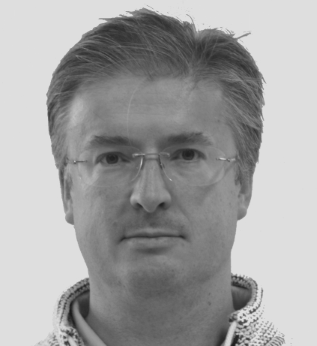
Dr Andrew Hurrell
Dr Andrew M. Hurrell received a B.Sc. (Hons) Degree in Physics and Modern Acoustics from the University of Surrey in 1994 and a PhD in Underwater Acoustics from the University of Bath in 2002. From 1994 to 1996, he was a member of the Acoustic Materials Team at the Defence Research Agency (Holton Heath). In 1996, he joined Precision Acoustics Ltd, Dorchester and is currently Principal Research Physicist. Dr Hurrell serves as one of the UK members of IEC Technical Committee TC87 (Ultrasonics) and chairs the British Standards Committee EPL/87 that shadows it. He is also a member of EH/1/7 the UK mirror committee of ISO TC43 SC3 (Underwater Acoustics). He was the inaugural winner of the Institute of Acoustics Young Persons’ Award for Innovation in Acoustical Engineering in 2005. He has approximately 35 publications in ultrasound modelling and instrumentation and acts as a peer-reviewer for 6 ultrasound related journals.
View Abstract: A practical workshop on the use of ultrasonic hydrophones